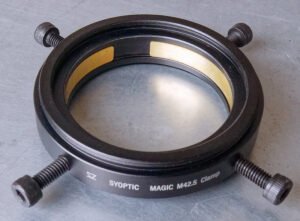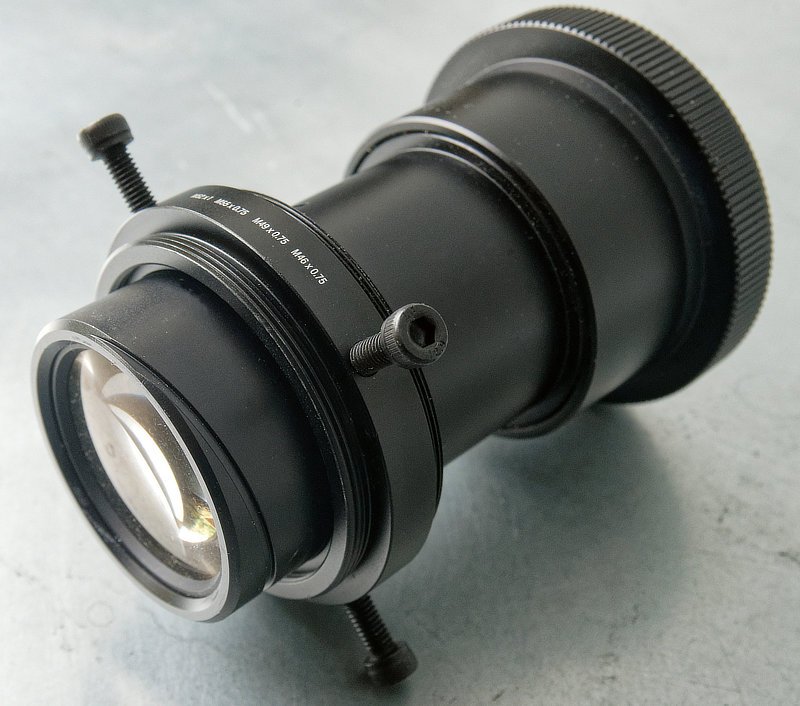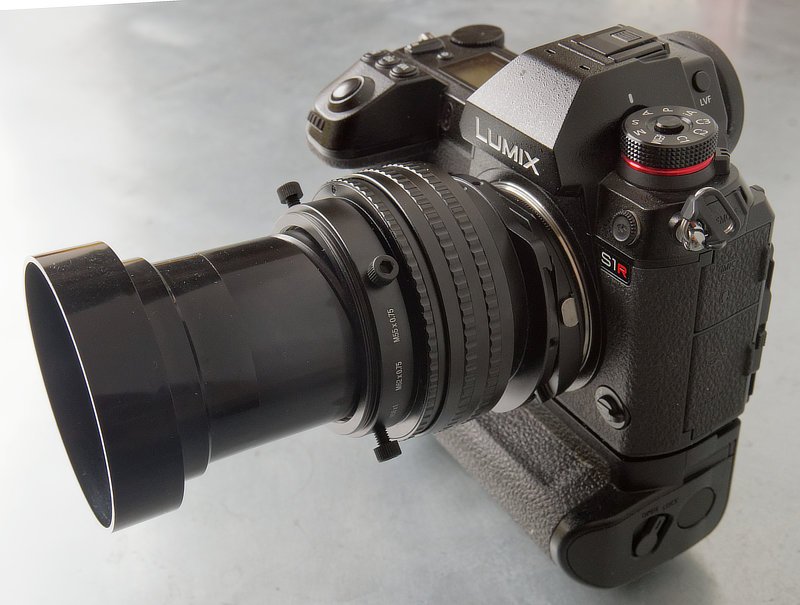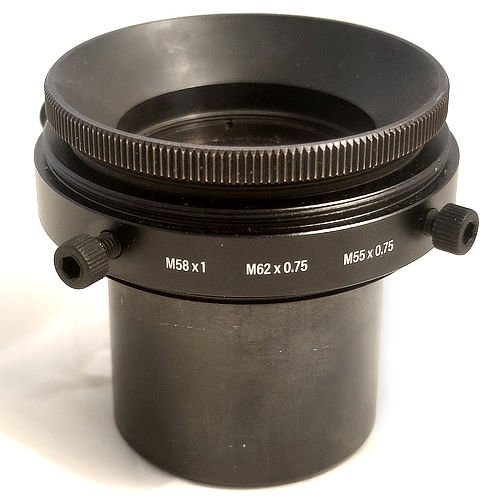Testing and cataloguing enlarger lenses spawned a new web site – Delta Lenses. Initially the appeal was ease of adaptation, given that most have M39 mounts – a whisker of a step-ring away from the universal M42. Enlarger lenses are intriguing and offer real-world benefits for many shooters. But projector lenses offer parallel worlds of rendition: wild, freaky bokeh and in-camera special effects beyond the ken of post-production.
It quickly became evident that Delta should explore all the alt.lens universe: cine and slide projector optics, enlarger lenses, industrial lenses, et al. The first problem, however, is how ever to do so?
I wasted my fair share of time rolling BluTac rings and cutting inner tube papardelle to jury-rig projector lenses into helicoids but, believe me, this is not the way. I don’t do product endorsements, but if you’re going to use projector lenses you absolutely need a clamp adaptor that gets your smooth-barreled PJ optic into a machine thread, into a helicoid, and onto your camera via an M42 mount adaptor.
I know of two: one made by Raf; the other by Syoptic. With a name like ‘Raf’ I expected my clamp adaptor to be hewn from Spitfire aluminium by an artisan in a Staffordshire shed and packaged in red, white and blue. But apparently this Raf mob is a bunch of overseas chaps, and our local grafters are the Syoptic boys. Lummy!
 Syoptic makes two clamp adaptors called ‘Magic Rings‘ that are capable of more than adapting projector lenses, but you’ll have to look them up to learn what. Crucially for our purpose, they’re designed for the two common projector lens lens barrel sizes: 42.5mm and 52.5mm. They come with hex-headed machine screws of variable length that squeeze copper inset rings symmetrically around the barrel of the lens. The rear of the adaptor is a 52mm or 58mm thread suitable for helicoid adaptors with M42 rear mounts. Everything simply screws onto everything else and away you go.
Syoptic makes two clamp adaptors called ‘Magic Rings‘ that are capable of more than adapting projector lenses, but you’ll have to look them up to learn what. Crucially for our purpose, they’re designed for the two common projector lens lens barrel sizes: 42.5mm and 52.5mm. They come with hex-headed machine screws of variable length that squeeze copper inset rings symmetrically around the barrel of the lens. The rear of the adaptor is a 52mm or 58mm thread suitable for helicoid adaptors with M42 rear mounts. Everything simply screws onto everything else and away you go.
The Magic Ring has a couple of crucial benefits: the first two are obvious; the third less so, until you start using it.
- It holds the barrel very securely.
- It endows the barrel with an adaptable thread, and
- It permits you to fine-tune the focal-flange distance.

Projector lenses often have rear elements near-flush with the housing, but others are heavily recessed – sometimes requiring removal of part of the barrel to achieve infinity focus. Still others allow a (threaded plastic) housing to be removed by unscrewing it, and a smaller metal cell barrel to be remounted. In all cases, it’s extremely helpful to be able to simply slide the clamp adaptor along the barrel to find the optimal position, which can then be marked on the lens. When finding the correct focal-flange distance, follow this simple procedure:
- Mount the Magic Ring to a helicoid adaptor
- Shrink the helicoid to its shortest length
- Mount the helicoid adaptor via a mount adaptor to the camera
- Insert the projector lens into the Magic Ring with the screws semi-slackened.
- Free-lens the projector lens until you achieve infinity focus.
- Lock the Magic Ring around the projector lens at infinity focus, then rack out the helicoid to check the minimum focus you can achieve.
- If you need to get closer, add an extension tube or use another (or a different) helicoid.

The best projector lenses are in the 60-90mm range, which is perfect for use with a tilt adaptor creating extra creative opportunities to show off distinctive bokeh properties. The above setup is a little bit magical: it’s a key that unlocks a world of interesting (and very cheap) optics. The Magic Ring (and the similar Raf alternative) aren’t complicated devices, but they just work – unobtrusively and efficiently – and they open the door to a world of possibilities you simply can’t access practically without them.
Additionally, as you explore the wide world of adaptable lenses – at DELTA, you will find almost 1,000 projector lenses catalogued and (some) graded for sharpness – you will encounter bulky optics like Schneider and Dokter’s excellent shift lenses; monster zooms like the Golden Navitars, and a treasure trove of cine projector lenses. None of these heavyweights can be mounted with blutac: only a device with the strength of flexibility of the Raf or Syoptic adaptors will suffice.

One interesting option that exploits the mechanical form factors of the 52.5mm Magic Ring is adaptation of the Kershaw Type 250 102mm f2.8 projector lens – an unusually fine reversed Ernostar design from the 1950s, made in Leeds – similar to the Pullin Pullinar. The large chromed outer barrel is attached to the brass inner lens assembly by the same 55 x 0.75mm thread as the Syoptic clamp. Adaptation of this lens is a simple matter of unscrewing it from its barrel, screwing it onto the Magic Ring, and attaching a M42 helicoid and adaptor. The extra security of the threaded attachment, and clamp, makes this rock solid, and results are surprising from a lens of this age and design.
Many more – usually pleasant – surprises await you as you explore the wide world of Delta-archived ‘alt-lenses’ with an array of M42 helicoids and Magic Rings poised for adapting them.

